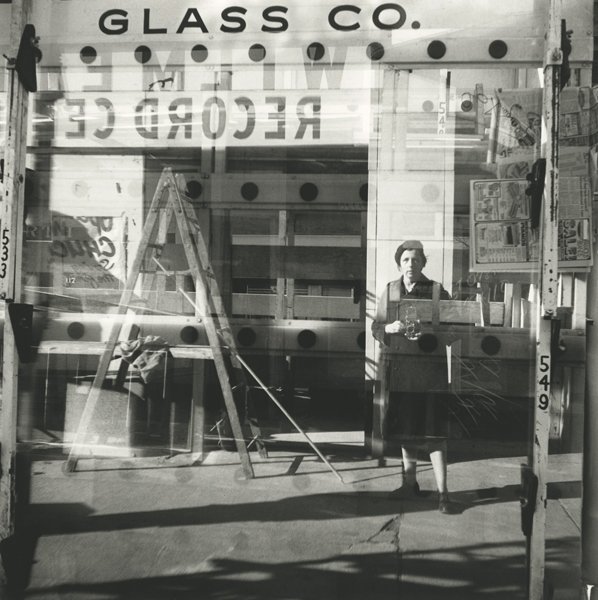
Self-portrait 1971, Chicago
What does it mean when we champion somebody? What goes on when a writer or other artist speaks to us so clearly we want to shout about it to the world? What affinities are set up?
Art occupies the margin of most lives, not the centre. It’s a pastime, an entertainment. Busy making money, busy with the pram in the hallway, keeping marriages afloat, people save their souls by other means. It’s the icing, not the cake.
My discovery of the work of Vivian Maier last year reignited these old questions. About the day job, and what confers meaning. About a lifetime minding other people’s kids, in the nursery, in the academy. About the loneliness of the long distance artist. What does it mean to be successful posthumously by the skin of your teeth? Why take photos for fifty years and never show them? How did Vivian Maier keep her eye fresh as she went about the drudge work, pushing the stroller? As a recent BBC documentary about her photographs puts it: “It’s a classic parable of the artist, unsung in life.”
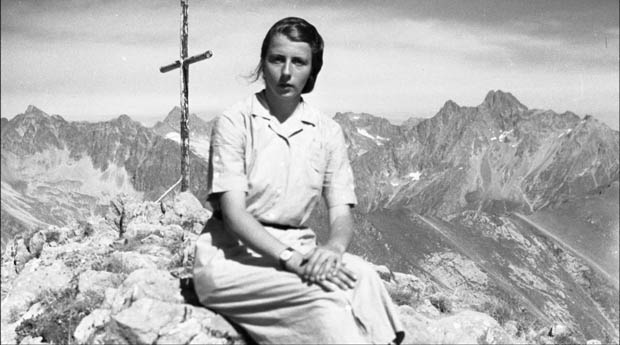
Vivian Meier in the Hautes Alpes
Many who knew Maier thought she was French, French Alsatian, or Austrian. She moved among them like a ghost. But in fact she was born in New York City. Her English was accented, and to my ear more German accented than French. These things morph. She spent her formative years in an Austro-Hungarian household in the Bronx. After that in the French Hautes Alpes region, at the edge of what is now the Écrins national park, in the villages of Saint-Bonnet-en-Champsaur and Saint-Julien-en-Champsaur.

Vivian Meier age 7 in Saint-Julien en Champsaur
From 1932, age seven, to 1938, and from 1949 through to her mid-twenties, she was part of this poor mountain community. She belonged to her mother’s place, yet looked at it from outside as a young American. Vivian’s character retained the hardy, perhaps even hard, qualities of mountain farmers. She would have wanted to fit in, to claim kinship with the old country. But you can never go home again. She was familiar with Alpine seasons, crops and chores in a way that the well-to-do Jewish community of Chicago’s North Shore, where she nannied, was not.
Vivian’s family seems to have been fractured in untold ways. Her mother was illegitimate, born Maria Jaussaud in Saint-Julien, to a girl on the threshold of sixteen. It was one of those shameful village scandals, common the world over, that eventually righted itself. Maria’s father was a young farmhand on the estate of Beauregard, the maternal homeplace. Maria and her mother emigrated to the US when the girl was seventeen. Both of them worked as maids. We see here a fairly standard picture of emigration with complex, not atypical, motives behind it.

The estate of Beauregard in the commune of Saint-Julien en Champsaur, which Vivian Meier eventually inherited from her maternal grand-aunt
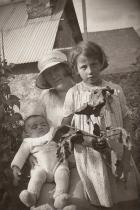
Vivian Meier, age 7, with her mother Maria Jaussaud, and cousin Sylvain Jaussaud. 1933.
Vivian’s father, Charles Maier, was Austro-Hungarian by birth. Records indicate present-day Sopron in Hungary. Given the name, they were probably Swabian by ethnicity, and so German-speaking. His family emigrated to the US in 1905. Vivian had a brother, also called Charles, two years her junior. They spent their early years in the household of her paternal grandparents on East 76th. Street in New York’s Bronx. The adults all worked small jobs – butchery, matron in an orphanage, grocery boy. Vivian became the third generation of live-in domestic help on her mother’s side. Maids of all work. Throughout her life she identified with the underclass, parking her camera where they could be seen, by turns empathetic and dispassionate in her regard. She was socialist in a way that seems to have been killed off in America. Walker Evans, Steinbeck, the dustbowl ballads: these are the company she keeps. She liked to walk her charges on the wrong side of town, where the poor people were, among the bums on skid row, snapping away. On one occasion she took children in her care to the slaughterhouses, to watch sheep being herded from the stock cars.

Her parents’ marriage seems to have come apart early. Vivian, as far as we can tell, had little sustained contact with members of her family in adulthood. It comes as a shock to learn that her mother lived on in New York until 1975. We don’t yet know how much she kept in touch with her brother Charles.
She was non-practising Catholic, stridently socialist, feminist and eccentric. A strong character – a strong woman. She believed Americans smiled too much – that no-nonsense French farming background again. It strikes me that she was only partly assimilated to American niceties. John Maloof tells how she would cook a cow tongue as her introductory meal for the families for whom she worked: not designed to endear, but a witty statement nonetheless.
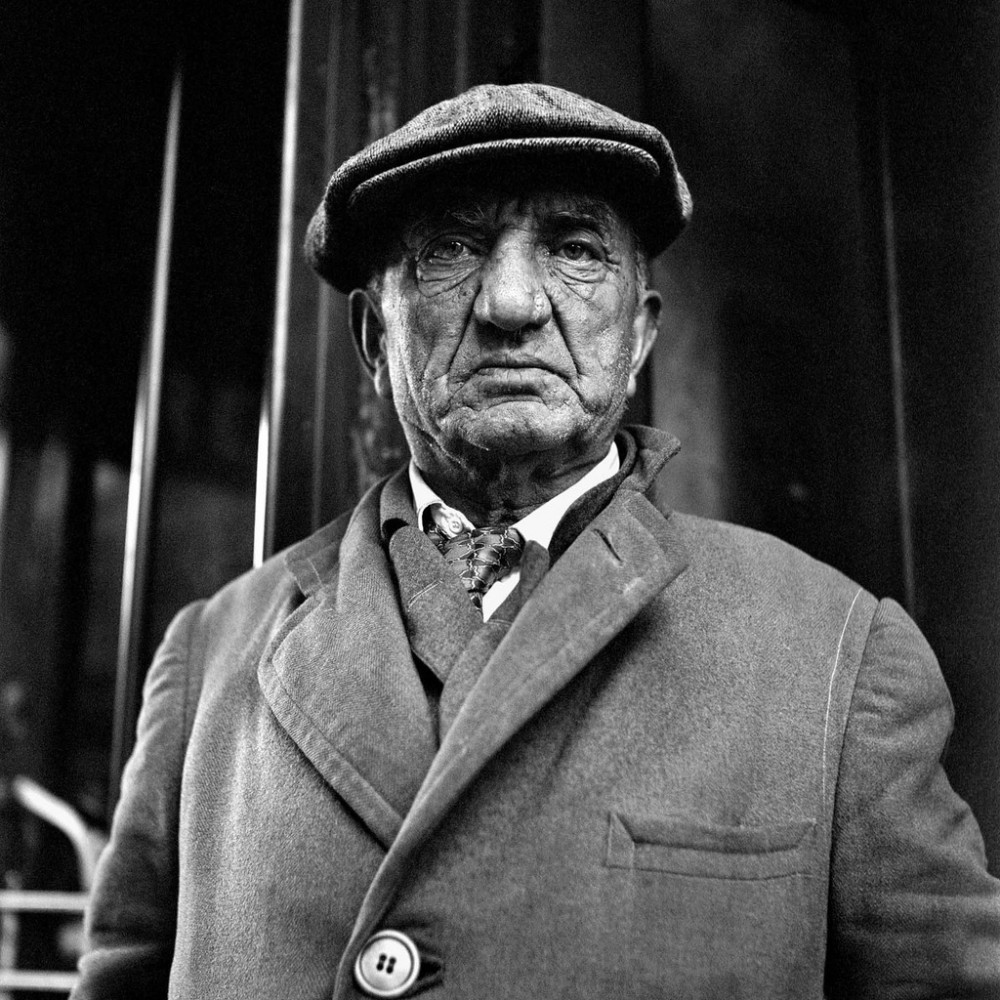
I take a perverse pleasure in imagining Vivian serving up this macabre Babette’s feast. She would first have had to secure the beef tongue from the butcher’s or, better and cheaper, fresh from the abattoir. She would boil it with bay leaf, some juniper berries, and use the boiling water for the stock: beef bones would be best, the stock thickened with their marrow, some flour and, of course, paprika. A little paprika could go in the batter as well. Slice the tongue thickly, dip it in batter, deep fry. Serve with Hungarian dumplings and the brown sauce. I am thinking here of the wonderful bone marrow dishes of Gyula Krúdy. Or the Bodengeschmack of Franz Maier-Bruck’s recipes – perhaps a distant relative. The culinary earthiness of Vivian’s triple inheritance – Alpine, Swabian, Hungarian – has come of age. Boiled Beef Tongue à la Hongroise, using a recipe picked up from her butcher grandfather. I would have no nonsense at the table. Milk for the kids – their Norman Rockwell expressions, on best behaviour for the new nanny. But a Soproni Kékfrankos – Pinot Noir – for the adults. Or better still an Egri Bikavér – Bull’s Blood. Force it down their throats. Force the tongue down their throats too. None of that North Shore genteel.
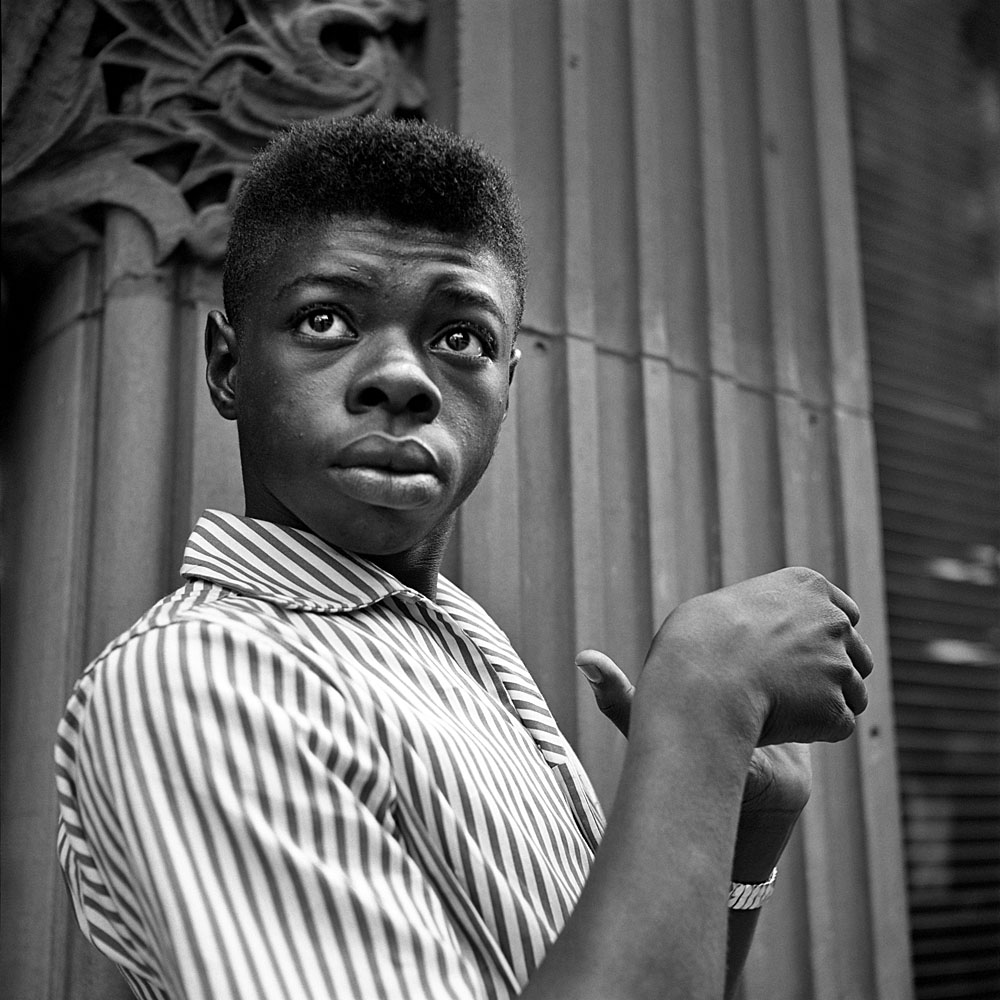
Her political and social awareness, her curiosity about other cultures, was phenomenal for someone nannying through the tranquillised fifties, as Robert Lowell called them. No small town America for her. She liked to occupy the margins – perhaps that is key to her extraordinary angle of vision. She lived in little dimity rooms in other people’s houses. Her frugality with food and film contrasts with the affluent splurge of the baby boomers. Only her lens and the memories of the children she nannied let us know she was fleetingly here.
In Highland Park, where she worked for our friends the Gensburgs, living in their house from 1956 until 1972, Vivian was one of the outsiders—housekeepers, maids, nannies who came into our tight, predominantly Jewish community and ensured it wasn’t hermetically sealed. These were women who brushed our hair, refereed our sibling fights, and supplemented our education, describing what it was like to be hungry enough to eat grass or desperate enough to lance a festering boil. Sometimes they stayed on for years and became part of the family and part of the neighbourhood. (Frances Brent, October 2012, The Tablet)
Nannying was the day job. In many of her photos children are at the edge of the field of vision, especially in the self-portraits. She had to sneak the shots while minding them. Anybody who has a creative streak, any teacher who spends long hours in the company of kids, knows what this feels like, knows it as a strategy of work.
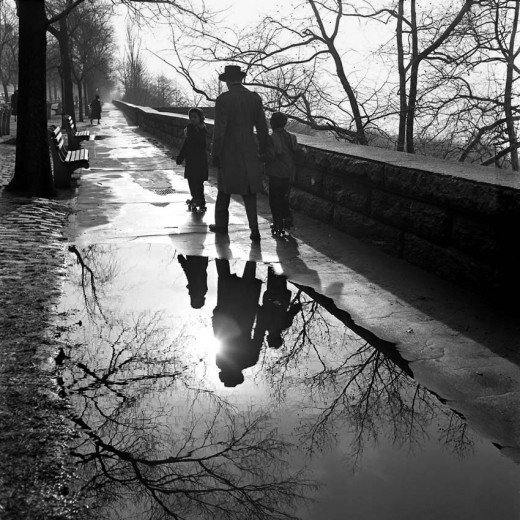
By most accounts Vivian Meier was a good nanny. She had a firm hand and could be by turns interesting, stimulating, eccentric. Returning to New York from France in 1951, she worked for a family in Southampton until 1956, when she moved to Chicago’s North Shore. There she stayed for many years, developing deep relationships with two families. She had the luxury of her own bathroom which doubled as darkroom. It was the children of these families who came to her aid towards the end of her life when her hoarding and other eccentricities became more pronounced.
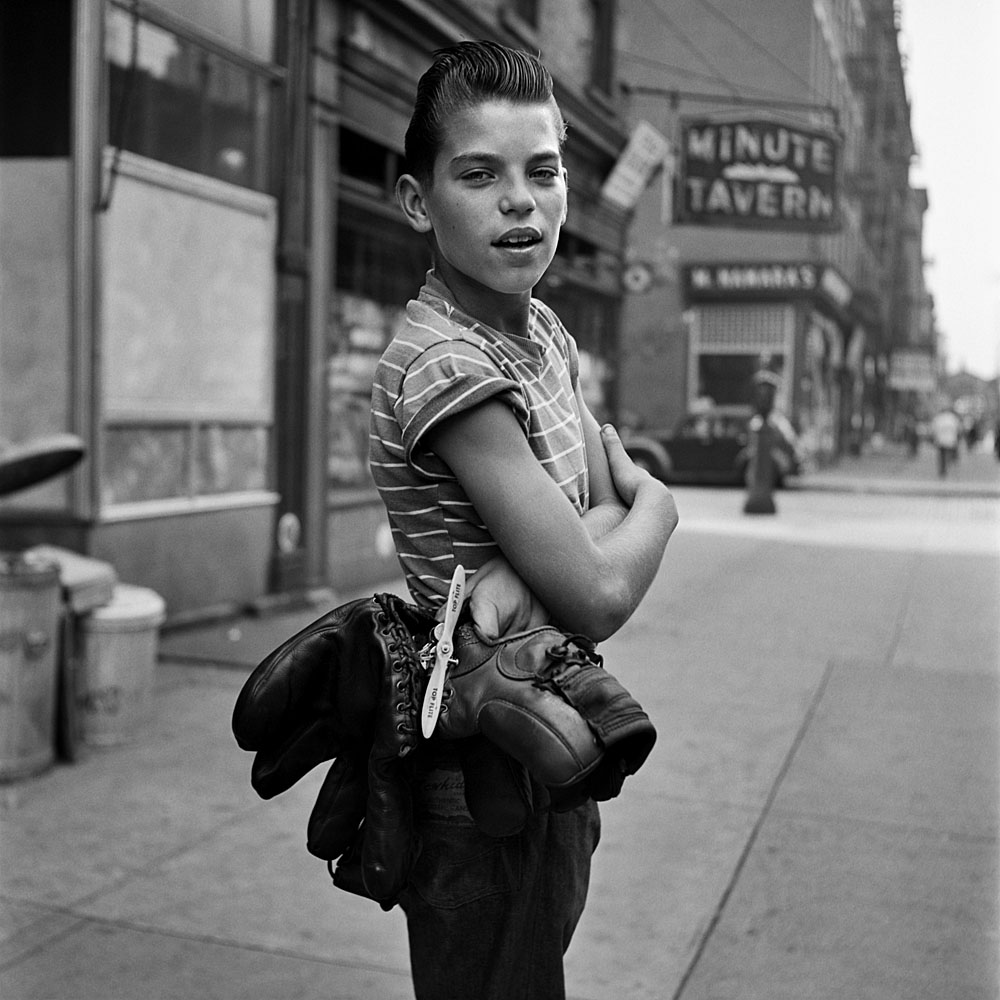
One blogger has described her work as “capturing life’s visual fireflies” and that seems to me exactly right. The 2013 BBC documentary The Vivian Maier Mystery has described her as a “poet of suburbia”. “The shadows of the America of her time fall across Vivian Maier’s photographs.” She was an audio, film and photographic record-keeper, a hoarder of ephemera. She was a one-woman national archive.
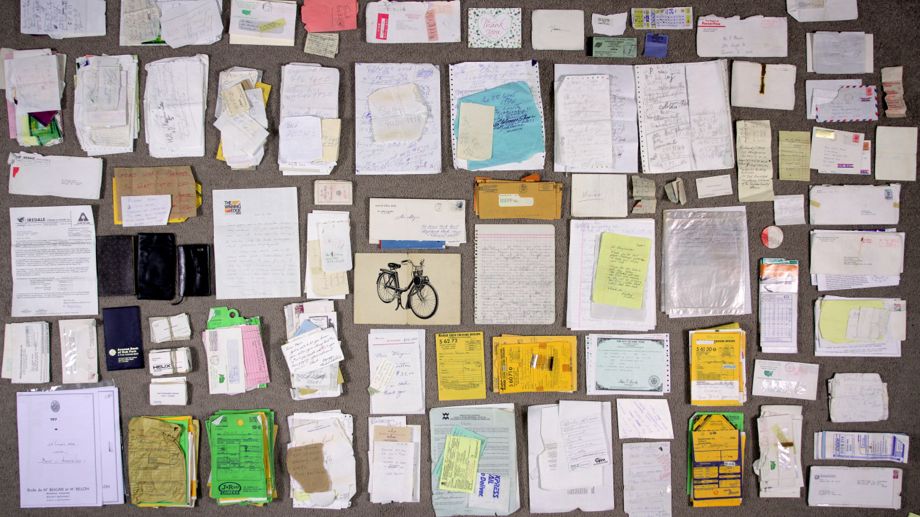
One of her hundreds, perhaps thousands, of self-portraits, taken end of June 1971 in the Chicago area, shows a store window with Loony-Balloony gum and toy boxes. It’s the kind of decrepid toy store window with panel board backing we never remember. We remember brighter, more desired toys. These are poor kids’ toys. On a plane slightly ajar from the image we see a diagonal line of transparent plastic clothes pegs – pegs used for a display that isn’t there. And then, reflected in the glass, Meier herself, also not quite present, in shadowed outline, with her trademark Mary Poppins hat and coat. What is she saying about the toyshop? Is she merely clicking it? What do the faint traces of self in these self-portraits say about her life?
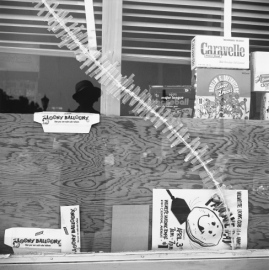
End of June 1971 – Chicago area, Vivian Maier
They seem to me to say something about the way single people live vicariously at the edge of other people’s families, observing the monopolising selfishness of the family unit, its need for help. Her focus is simultaneously that of a provider of comfort and care and an observer of the world’s cruelty.
In another photo, this time from July 1956 in the Chicago area, she photographs a shoe on its side on the path. Valley Shoes is inscribed across the insole, facing us forlornly. Where is its pair? It’s a fairly sensible woman’s shoe, rather like the shoes Vivian wore herself. Behind it, on the sidewalk of this clearly disreputable area, is the lower half of a child’s stroller, with two little sexless feet in their first shoes, waiting for the photographer to be finished and the stroll to continue. And in the foreground the shadow of the Maier hat: observer, shoe coming to grief, child strolling out. The picture is attempting to tell a story.
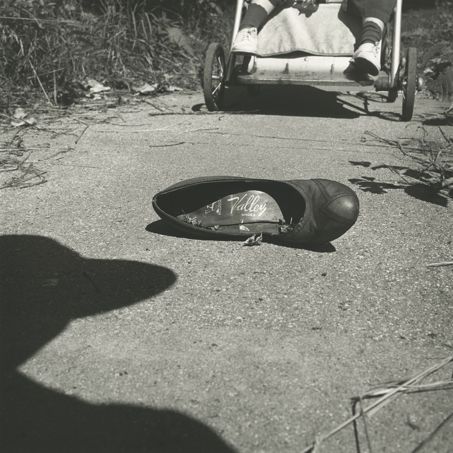
July 1956 – Chicago area, Vivian Maier
She knows nannying is both a responsible job and drudge work. Comments by her ex-employers in John Maloof’s and Charlie Siskel’s wonderful 2013 documentary Finding Vivian Maier sometimes acknowledge her ambiguous status. We have difficulty admitting we entrust our children to menials. The children Vivian Maier looked after are more clear-cut in their affections than their parents are. Some loved her, as she must have loved them. “She was like a second mother to us,” one family said. Some have grudges to bear – she did this, she did that – in the new misery memoir mode. But most recall Vivian Maier affectionately while acknowledging her oddness, particularly in later life. She grew into her eccentricities.
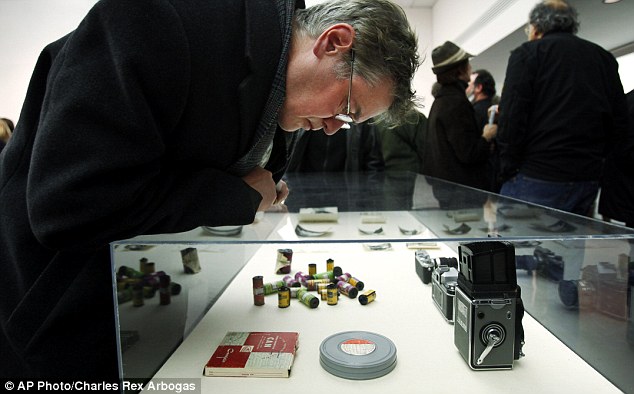
Lane Gensburg, whose family hired Vivian Maier as their nanny when he was a boy, at the exhibition of her work in Chicago. Daily Mail photo.
She knows in her blood the way the rich handle their servants and that you’ve got to keep employers in their place. Her photos constitute a record, an unblinkered social commentary – the view of a French immigrant looking down through society to its underclass, its white and black poor before the advent of Civil Rights. It’s a compassionate view at odds with current Tea Party nostrums. There’s a heart in the lens.
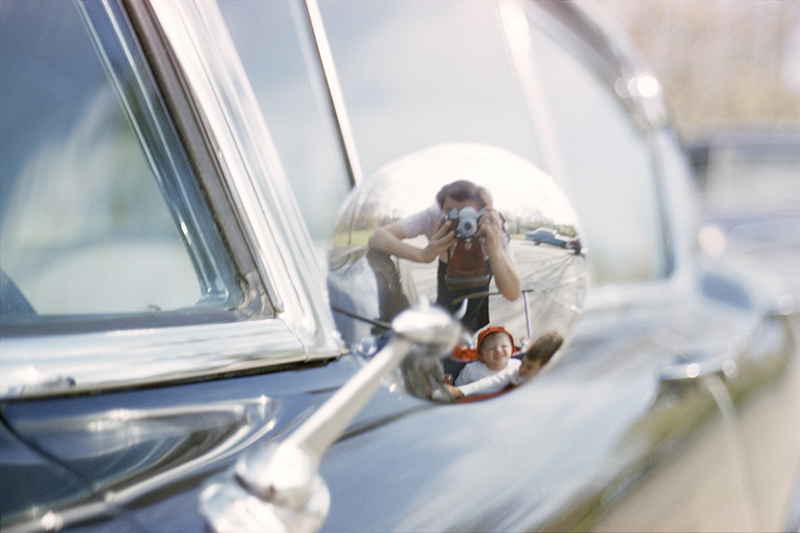
In another stroller picture we see two seated toddlers reflected in the chrome backing of a car mirror, Chicago area again. It reprises an earlier April 24 1957 black and white shot. There are many of these hubcap, mirror, shopfront reflections. Nanny leans over the stroller to snap it. The car is clean and shiny, probably from black elbow grease, its aerodynamic streamlined form shaped like our view of the fifties. The Eisenhower years. The Country Club. The family motor as American dream. The circular mirror just off-centre. It reminds me of The Arnolfi Marriage by Jan Van Eyck, in which we see a tiny artist reflected in a wall mirror, toiling away at his commission for the bourgeoisie. Simultaneously a nuptial portrait and a portrait of the artist. Nanny and shutterbug.
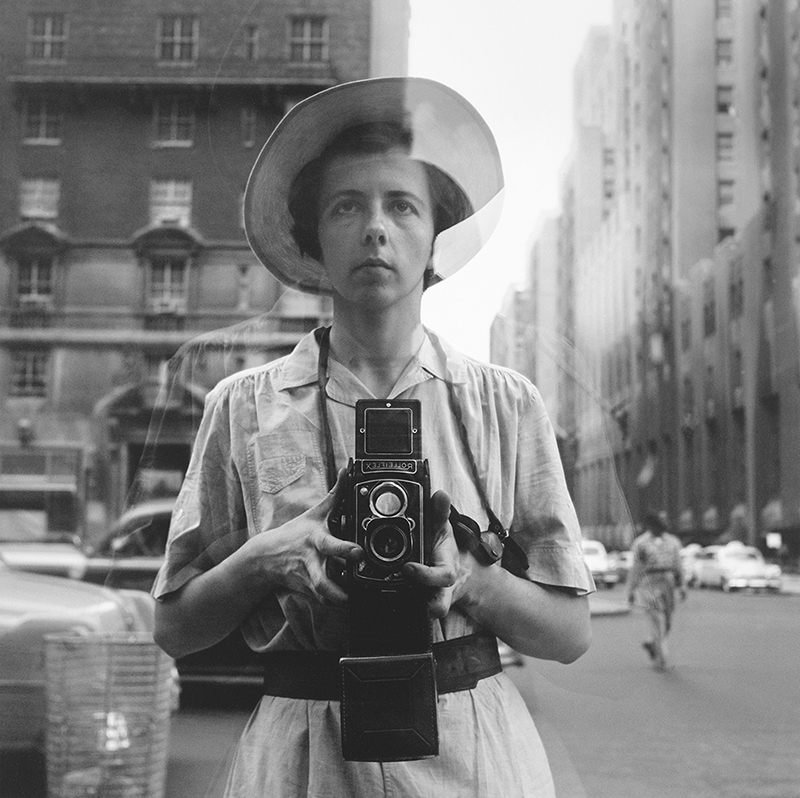
Enigmatic – that word often crops up to describe Vivian Maier. Is it selfishness that made her shoot and go? Or an ultimate eccentricity? Is she saying you’ll never see my stuff? Occasionally in the Maloof and Siskel documentary those who knew her lament that she didn’t claim the limelight, didn’t make more of herself, sell herself better. Her seeking the shade is almost an affront to self-determination, to the dream of success. It both confounds and confirms the dream of making it as immigrant and artist.
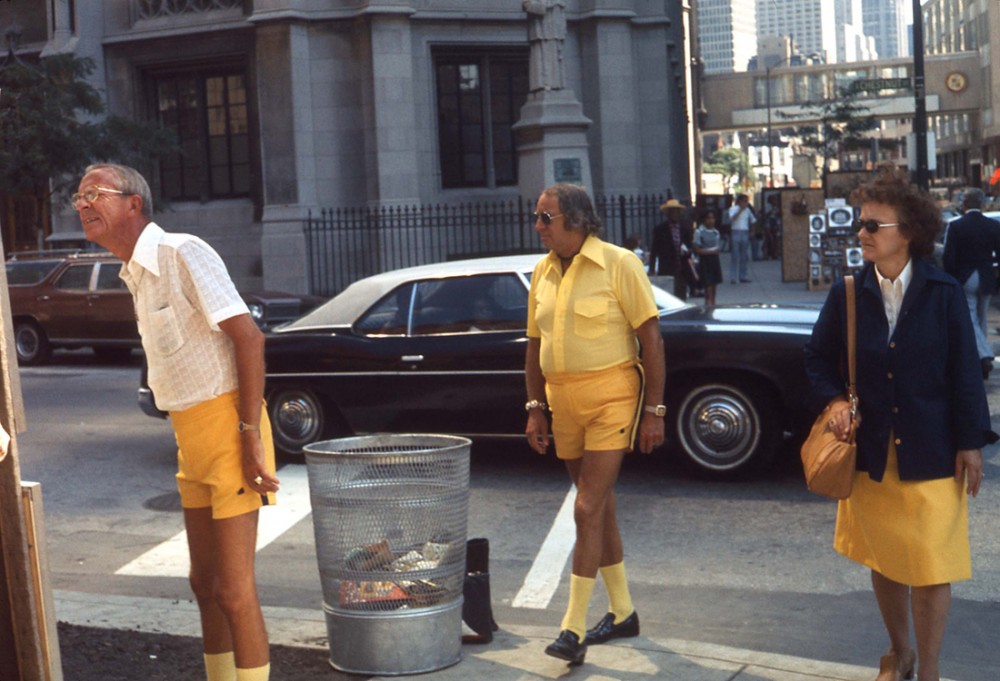
In the nineteen-seventies she began more and more to shoot in colour. In the above yellow composition, taken in 1975, she has spotted the infantilism of adults, the dream of wearing shorts forever. It has a surreal naiveté. A number of the adults in John Maloof’s and Charlie Siskel’s documentary have the same overly preened and manicured look, like pieces of topiary. I remember in the sixties and seventies when Americans came home to the old country they always looked brighter, imbued with hope, kitted out in cotton and seersucker, putting a brave face on the facts of decline and death.
It is an accident of art – found art – that by the merest whisker her work has been saved. She never touted it round the galleries. John Maloof discovered it by fluke, in a trunk for auction. In our jaded photo culture, our culture of snap and go, he has rescued it and given us its full glory. All laureates go to him for championing her. Those many thousands of negatives, her record of a life, of the post-war dispensation, could so easily have been consigned to the flames. Between art and the dumpster. This near-miss is a miracle caught in the nick of time.
You can see more Vivian Maier photos here at Artsy.net.


2 thoughts on “Lost & Found: Vivian Maier”